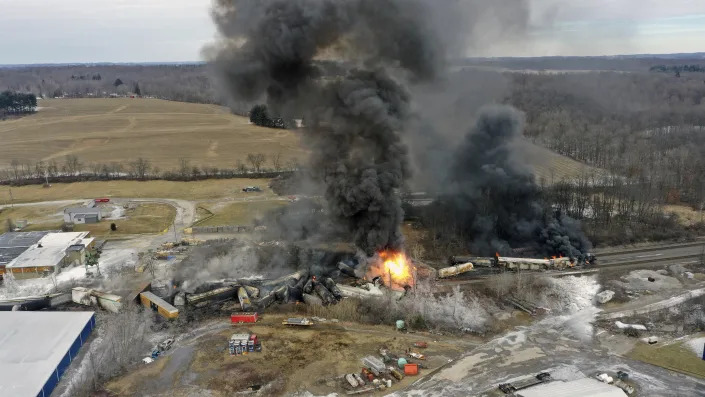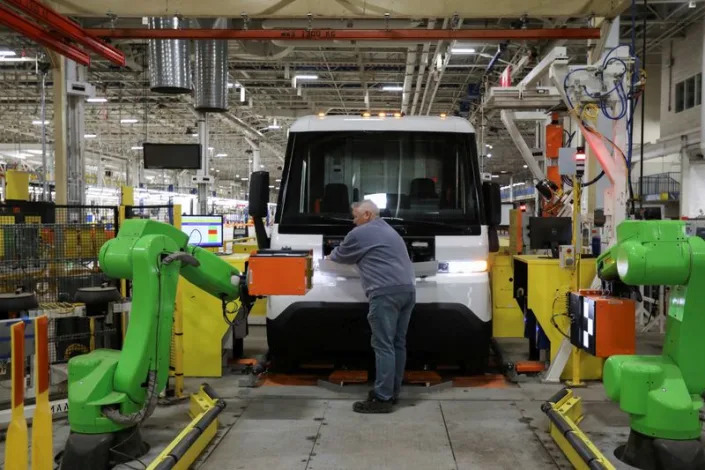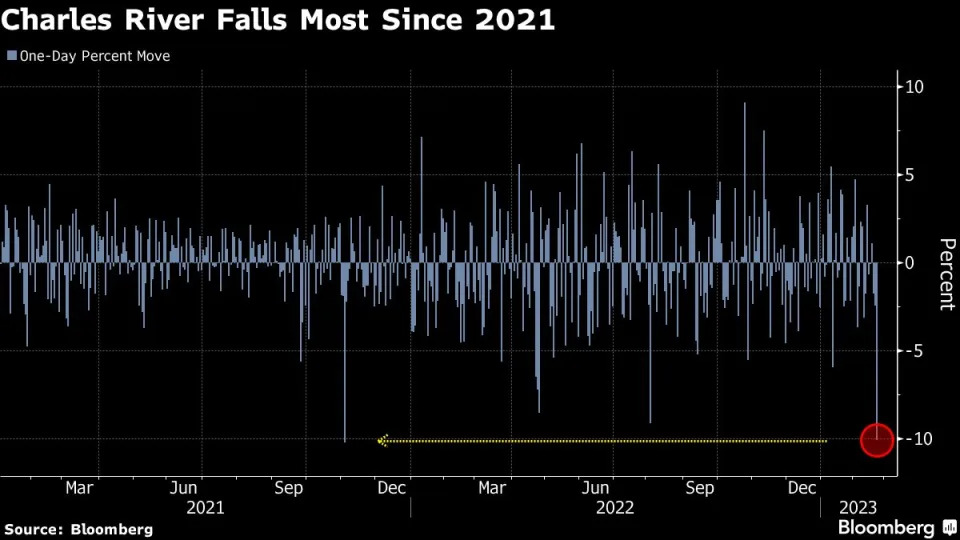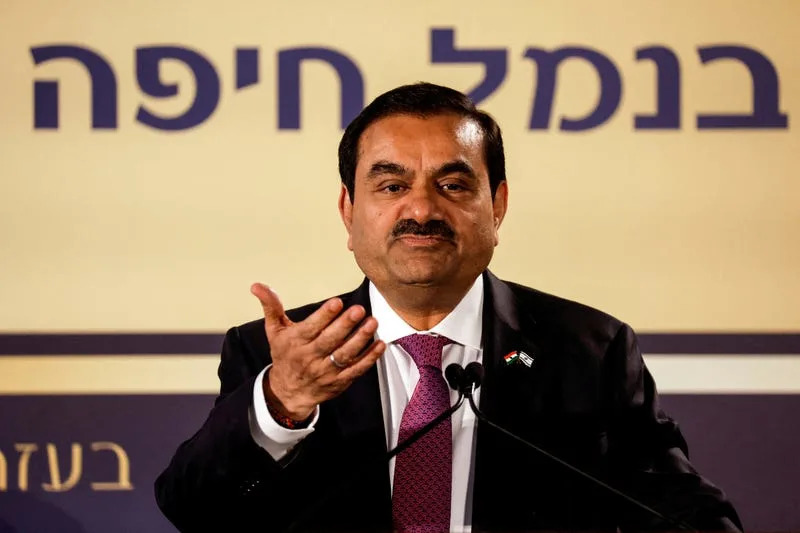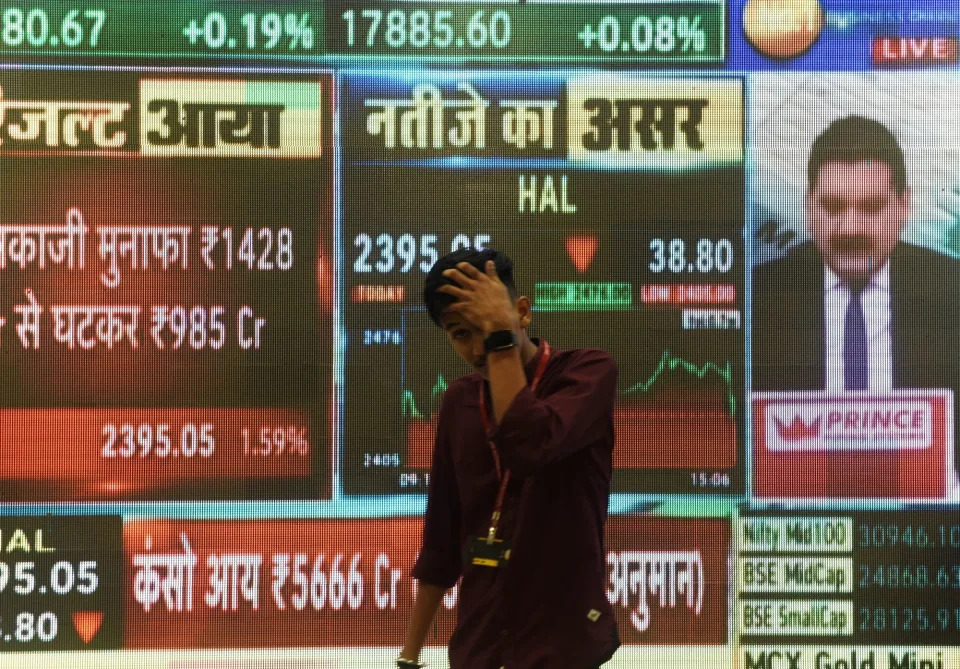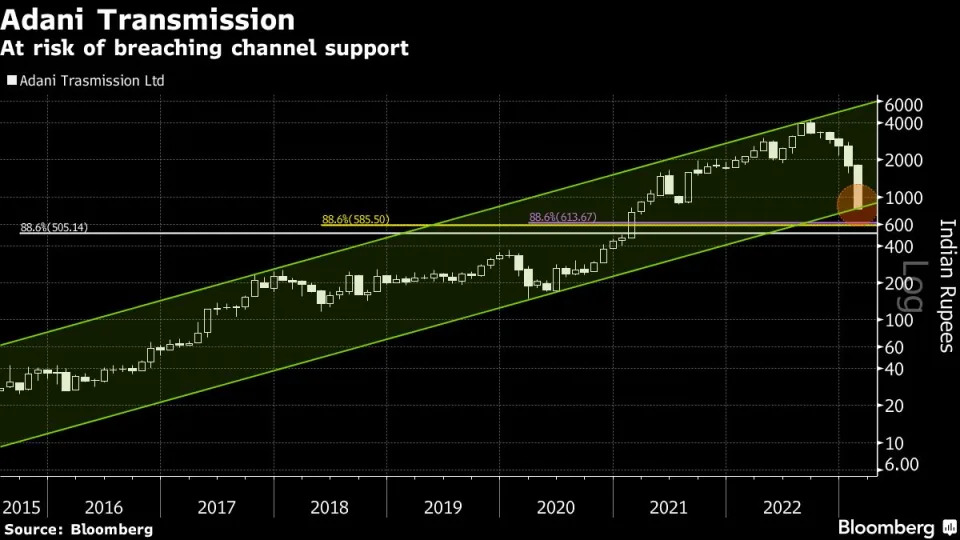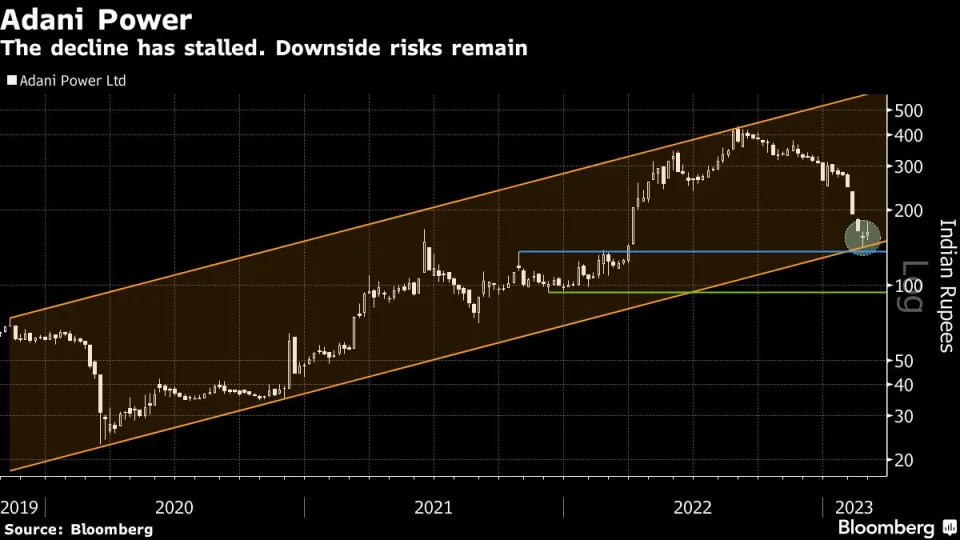US to Pick Ex-Mastercard CEO Banga as World Bank President
US to Nominate Ajay Banga for World Bank President
Why is he the right person for the job?
Eric Martin
Thu, February 23, 2023
(Bloomberg) -- President Joe Biden will nominate former Mastercard Inc. Chief Executive Officer Ajay Banga in a surprise pick to be the next president of the World Bank as Washington pushes the lender to expand its financial firepower and confront global issues such as climate change and public health.
Banga “has spent more than three decades building and managing successful, global companies that create jobs and bring investment to developing economies, and guiding organizations through periods of fundamental change,” Biden said in a statement Thursday.
The 63-year-old currently serves as vice chairman at US investment firm General Atlantic LP. Before that, he spent a decade as president and CEO of Mastercard. He also held various positions at Citigroup Inc., including as CEO of the Asia-Pacific region.
While the official nomination process to replace current President David Malpass opened earlier Thursday — and the bank has signaled that the final selection may not come until early May — Washington’s candidate has traditionally taken the top spot at the World Bank, where the US is the largest shareholder. Malpass, who was nominated by President Donald Trump, last week unexpectedly announced that he plans to leave by the end of June.
The nomination comes at a time when the World Bank and its twin Bretton Woods institution — the International Monetary Fund — face growing demand for their assistance, with 60% of low-income nations at or near debt distress, and countries owe their creditors hundreds of billions of dollars. It also comes as Treasury Secretary Janet Yellen is pushing an evolution of the development lender from its traditional focus on country-specific lending to focus on global goods like fighting climate change and pandemics.
Raised in India, Banga has “a unique perspective on the opportunities and challenges facing developing countries and how the World Bank can deliver on its ambitious agenda to reduce poverty and expand prosperity,” Biden said.
Yet he wasn’t among a list mentioned by analysts in recent days, which included Samantha Power, head of the US Agency for International Development; and Ngozi Okonjo-Iweala, the current head of the World Trade Organization, a dual Nigeria-US citizen. The World Bank board said Wednesday said that it would strongly encourage women nominees.
Banga’s nomination comes with Yellen in India for discussions among Group of 20 finance ministry and central bank leaders gathering this week in Bengaluru, India.
Regional Initiatives
Banga has co-led the Partnership for Central America, an initiative launched by Vice President Kamala Harris to marshal private-sector support for the region aimed at creating more economic activity and jobs, with contributions of more than $4.2 billion across about 50 companies and organizations.
The Biden administration is confident that Banga will have a strong commitment to gender equality and inclusion, and that his experience growing up and spending the early part of his career in India will help give him a global perspective, a senior administration official told reporters.
If appointed by the executive board, Banga would follow the early departure of David Malpass, who was tapped in 2019 by then-President Donald Trump and seen by critics as unfriendly to Biden and Yellen’s climate priorities.
The bank’s next president will be tasked with reforming the nearly 80 year-old institution, a process spurred along by a Group of 20 review released last year and promoted by Yellen.
Among other recommendations, the bank is urged to tackle global and transnational issues, particularly climate change, and expand its so-called capital adequacy, allowing it to share more funds and take on more risk, all while continuing its traditional role of poverty reduction and project finance.
Any effort, however, will need to be balanced against preserving the bank’s triple-A credit rating and preferred creditor status, which allows it to borrow cheaply and lend at below-market rates.
Malpass, whose term was set to run through April 2024, came under scrutiny in September after appearing to dodge questions over the man-made causes of climate change, raising calls for his replacement and for multilateral banks to stop funding fossil-fuel energy projects.
The selection of Banga “clearly signals a desire to focus on the financial model of the institution, and that there’s more to be exploited in terms of how much financing the World Bank can provide, on what terms,” said Scott Morris, a former US Treasury official now at the Center for Global Development. “This nomination suggests they really are serious about digging into the financial side.”
Treasury officials have signaled that while they want the bank to lend more, changes to use existing resources as efficiently as possible should be a prerequisite to any thinking about adding new resources to the bank.
The bank’s executive board said Wednesday that it will accept nominations through March 29, and then decide on a shortlist of up to three candidates and conduct formal interviews.
Yellen earlier this month called on the bank to implement changes by the time shareholders meet for its so-called Spring Meetings this April in Washington, and asked it to kick off a second phase of reforms by the time shareholders meet for its annual meetings in October.
Banga served as a member of President Barack Obama’s Commission on Enhancing National Cybersecurity, and is also a past member of the US President’s Advisory Committee for trade policy and negotiations.
--With assistance from Viktoria Dendrinou.
US nominates Ajay Banga for World Bank president
FATIMA HUSSEIN and PAUL WISEMAN
Thu, February 23, 2023

MasterCard CEO Ajay Banga speaks to reporters in New York, April 6, 2011. Former Mastercard CEO Ajay Banga has been nominated by the U.S. to lead the World Bank, President Joe Biden announced on Thursday morning. The news comes days after Trump-appointee David Malpass announced plans to step down from his role leading the 189-nation agency. (AP Photo/Seth Wenig, File)
WASHINGTON (AP) — The United States is nominating former Mastercard CEO Ajay Banga to lead the World Bank, President Joe Biden announced on Thursday, crediting him with critical experience on global challenges including climate change.
The news comes days after Trump appointee David Malpass announced plans to step down in June from his role leading the 189-nation poverty reduction agency. His five-year term was due to expire in April 2024.
Addressing the impacts of climate change at the multilateral bank is a priority for the U.S. And leading climate figures have urged the Biden administration to use Malpass' early departure as an opening to overhaul the powerful financial institution, which has been increasingly criticized as hostile to less-wealthy nations and efforts to address climate change.
Malpass ran into criticism last year for seeming, in comments at a conference, to cast doubt on the science that says the burning of fossil fuels causes global warming. He later apologized and said he had misspoken, noting that the bank routinely relies on climate science.
Banga, currently vice chairman at private equity firm General Atlantic, has more than 30 years of business experience, having served in various roles at Mastercard and the boards of the American Red Cross, Kraft Foods and Dow Inc. He is the first Indian-born nominee to the World Bank president role.
“Ajay is uniquely equipped to lead the World Bank at this critical moment in history," Biden said in a statement, adding that Banga “has critical experience mobilizing public-private resources to tackle the most urgent challenges of our time, including climate change.”
Treasury Secretary Janet Yellen said in a statement that Banga's experience “will help him achieve the World Bank’s objectives of eliminating extreme poverty and expanding shared prosperity while pursuing the changes needed to effectively evolve the institution,” which include meeting “ambitious goals for climate adaptation and emissions reduction.”
Biden's climate envoy, John Kerry, said on Twitter that Banga was “the right choice."
“He can help put in place new policies that help deploy the large sums of money necessary to reduce global emissions and help developing and vulnerable countries adapt, build resilience, and mitigate the impact of greenhouse gases," Kerry tweeted.
The United States has traditionally picked the World Bank chief. The head of its sister agency, the International Monetary Fund, has traditionally come from Europe. But critics have called for an end to that arrangement and for developing countries to gain a bigger voice in the two organizations.
The World Bank has promised to conduct “an open, merit-based and transparent selection process″ and said it would accept nominations through March 29.
Eric LeCompte, executive director of the anti-poverty coalition Jubilee USA Network, said the United States was “looking to nominate people that will be supported by the developing world’’ and that it was “incredibly relevant’’ that Banga was born in India. “They want to be able to appoint people who have experience and roots with other economies,’’ LeCompte said.
“I can’t think of a more intense time for a person to be coming into this job,’’ said Clemence Landers, policy fellow at the Center for Global Development, a Washington think tank.
The bank is under pressure to expand its mandate — an effort that likely would require the next president to convince donor countries to provide more money.
Critics say the bank should be doing more to help poor countries finance projects to combat and prepare for climate change without saddling them with heavy debt burdens. And Landers said it needs to do a better job at tackling problems that cross borders such as providing pandemic surveillance and backing broad vaccination programs.
___
Ellen Knickmeyer and Paul Wiseman contributed to this story.
___
Follow the AP's coverage of the World Bank at https://apnews.com/hub/world-bank.
World Bank Opens Nominations for Malpass Successor Thursday
Eric Martin
Wed, February 22, 2023

(Bloomberg) -- The World Bank on Thursday will open a five-week period for nominations to succeed President David Malpass, days after he announced his early departure from the anti-poverty lender, and expects to select a new chief by early May.
The executive board met Wednesday to discuss the selection process and will accept nominations through March 29, the institution said in a statement. Executive directors, who will decide on a shortlist of up to three candidates and conduct formal interviews, said they strongly encourage the nomination of women.
Candidates should have “a proven track record of leadership and accomplishment, particularly in development” and “experience of managing large organizations with international exposure,” among other qualifications, the board said.
Malpass’s decision last week to step down gives President Joe Biden’s administration an opening to pick someone to carry out its goal of overhauling the global development lender to focus more on fighting climate change. His five-year term was set to run through April 2024. The Washington-based institution lends tens of billions of dollars a year to low- and middle-income countries.
By tradition, the US nominates the Washington-based institution’s president. But the process has included non-US candidates in the past. Ngozi Okonjo-Iweala, the current head of the World Trade Organization, and Colombian Finance Minister Jose Antonio Ocampo were both candidates in 2012, when the job went to Dartmouth College President Jim Yong Kim.
Malpass was the only candidate nominated in 2019, when he was put forward by US President Donald Trump.
The US is the World Bank’s largest shareholder, and its voice usually carries the biggest weight at the lender. Names mentioned by analysts as potential Biden administration picks include Samantha Power, head of the US Agency for International Development, and Rajiv Shah, the president of the Rockefeller Foundation and a former head of USAID.
US Treasury Secretary Janet Yellen last week said that the Biden administration looks forward to the World Bank’s executive board running a “transparent, merit-based and swift nomination process.” The US will put forward a candidate who will build on the bank’s longstanding work to fight extreme poverty, promote shared prosperity, and advance work to evolve the development bank to meet global challenges, Yellen said.
Yellen is in Bangalore, India, this week, where finance ministers and central bank governors from the Group of 20 rich countries are gathering, and she’s scheduled to speak at a news conference on Thursday.
Along with the International Monetary Fund and host India, the World Bank is organizing a sovereign debt roundtable in Bangalore with the hope of fixing the bottlenecks that have prevented quick restructuring of the debt of fragile nations.
